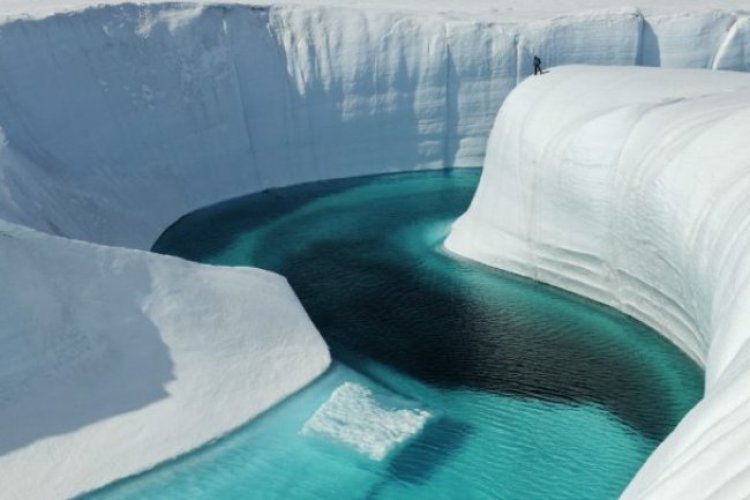Greenland is the largest island on the planet and administratively it is under the control of Denmark
Greenland is the largest island on the planet and administratively it is under the control of Denmark - Greenland is formed not only by the homonymous island , the largest of the whole Earth with its 2,130,800 km² , by many other less extensive islands located always a short distance from the main island

Greenland is the largest island on the planet and administratively it is under the control of Denmark - Greenland is formed not only by the homonymous island , the largest of the whole Earth with its 2,130,800 km² , by many other less extensive islands located always a short distance from the main island
Greenland is the largest island on the planet and administratively it is under the control of Denmark. The name means 'green land', which contrasts with the environmental reality, given that about 81% of the territory is covered with perennial ice and therefore only some restricted areas are suitable for human settlement (the density is in fact very low).
PHYSICAL GEOGRAPHY OF GREENLAND
The territory of Greenland is 4/5 covered by perennial ice, the so-called inlandsis, and is characterized by a central flat part, bordered by mountain ranges that come close to the coastal strip, almost always very narrow; the highest elevation is reached in the central-eastern part of the island, with Gunnbjørn Fjeld (3.700 m.) .
Greenland is formed not only by the homonymous island , the largest of the whole Earth with its 2,130,800 km² , by many other less extensive islands located always a short distance from the main island, Qeqertarsuaq / Disko (8,578 km²) , Milne Land (3,913 Km²) , Traill (3,452 Km²) edYmer (2,437 Km²) the largest ones; the coasts are almost always very indented and see the presence of a large number of fjords, for a total coastal development of 44,087 kilometers; the land closest to Greenland is the Canadian island of Ellesmere to the north-west, from which it is separated by the Nares Channel, on average around 30 km wide; Iceland, to the south-east, is about 300 kilometers away.
The watercourses are all quite short and rare, much more important are the glaciers and the ice strom (ice currents), which carry the ice mass towards the sea, thus giving rise to the icebergs; the lake basins are small and always a short distance from the sea and obviously are often frozen.
The climate is polar - subpolar, the oceanic influence is minimal due to the inlandsis, which cools the atmosphere; the average maximum temperatures exceed zero only in the summer period and become more rigid in the interior and rising in latitude towards the North Pole, the minimum temperatures are only 5-6 ° C lower, winter is moderately cold compared to summer given that temperatures reach -10 ° C in the most favorable areas, even if sometimes the presence of strong winds from inland areas make them drop rapidly; the precipitations, snowy in most cases, are on the whole rather scarce, more frequent in summer and in some areas closer to the open sea.
HUMAN GEOGRAPHY OF GREENLAND
At the administrative level, Greenland is divided into 5 municipalities, its north-eastern part, for an area of 972,000 km², is uninhabited and does not fall within this division, but constitutes a national natural park, the largest on the planet.
Due to its environment and location, Greenland is sparsely populated and human presence is limited to some coastal areas, especially in the south-west, where the capital Nuuk (Godthåb in Danish - 19,100 inhab.) Is also located , which hosts over 30% of the Greenlandic population and is the only inhabited center with city characteristics; the rest are villages with at most a few thousand inhabitants, such as Sisimiut (Holsteinsborg - 5,700 inhab.) and Ilulissat (4,800 inhab.), also located on the west coast, but further north of Nuuk and above the Arctic Circle, as opposed to the capital; the urbanization rate is however quite high, 86%, given that only about 7,400 people live in houses or small groups of isolated houses.
The Greenland Inuit (89%) make up a large part of the population, the rest is given by Whites (11%) , of predominantly Danish origin; the Lutheran religion is professed by 85% of the inhabitants, but there are also other Christian communities and indigenous spiritual rites are also practiced.ù
TOURISM IN GREENLAND
Tourism is a niche sector, those who visit Greenland do it above all for a spirit of adventure and naturalistic reasons.

















